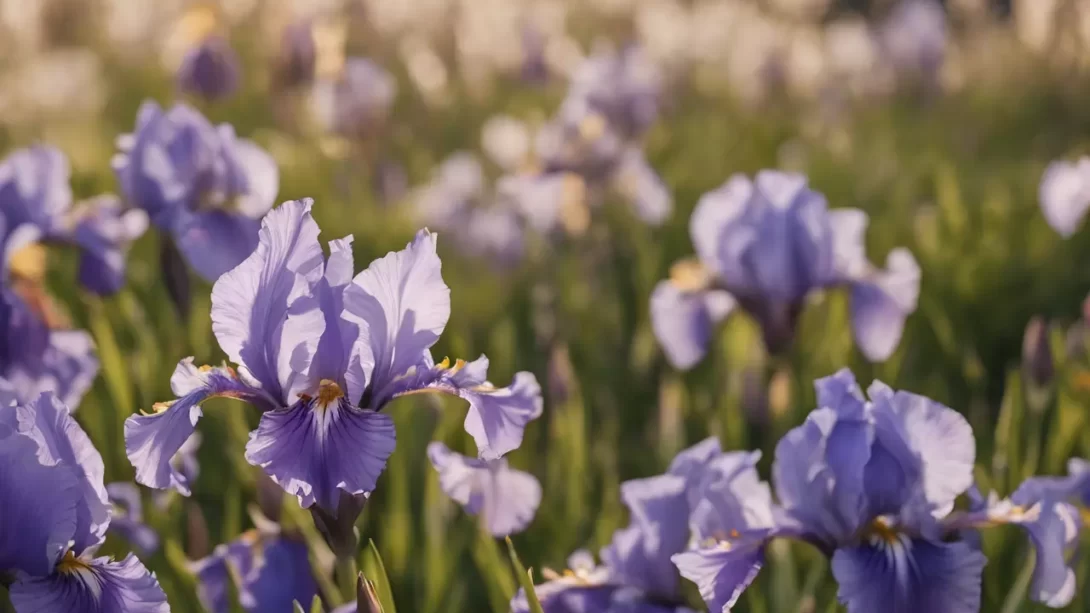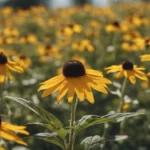In the vibrant world of gardens, irises stand as perennial stars, gracing landscapes with their exquisite blooms. To ensure these botanical gems reach their full splendor, understanding the art of fertilization becomes paramount. This guide navigates the intricate dance of nurturing irises through well-timed fertilization, unlocking the secrets to robust growth and breathtaking blossoms. From the emergence of their graceful foliage in spring to the post-bloom period, irises have distinct nutrient needs. Join us as we explore the nuances of the iris growth cycle and delve into the first act of this botanical ballet—early spring fertilization—setting the stage for a season of vibrant irises.
- Best nutrition for your iris plants
- Improves iris bloom
- Improves health of iris plants
Iris Growth Cycle
The life of an iris unfolds in a series of stages, each demanding specific care to ensure a spectacle of color and vitality. The journey begins in early spring as iris shoots emerge, heralding the imminent bloom season. This is followed by the grand performance of their intricate and diverse flowers, captivating all who behold them. Post-flowering, irises shift focus to fortifying their roots and foliage for the seasons to come. Understanding this cycle is key to tailoring the right nourishment at each stage, maximizing the health and beauty of these perennial favorites.
Early Spring Fertilization
As the curtain rises on the iris growth cycle, early spring takes center stage for the first act of fertilization. This crucial period marks the emergence of iris shoots, signaling the onset of their active growth phase. Providing a balanced and slow-release fertilizer at this juncture ensures that irises receive the necessary nutrients to fuel robust foliage development. Nitrogen-rich fertilizers, with a balanced N-P-K ratio, offer the essential elements for vigorous leaf and stem growth. This strategic early spring fertilization sets the tone for a season of healthy irises, laying the groundwork for the splendid display of blooms to come.
Pre-Bloom Fertilization
As the anticipation builds for the grand reveal of iris blooms, a well-timed encore in the form of pre-bloom fertilization ensures a breathtaking performance. Just before the bloom period, irises benefit from an additional boost of nutrients to support robust flower development. Potassium-rich fertilizers take the spotlight during this stage, promoting vibrant colors and sturdy stems. Phosphorus, a key component, contributes to healthy root systems, ensuring the irises stand tall and proud. This pre-bloom nourishment primes the plants for their floral showcase, enhancing the quality and longevity of the irises’ captivating blossoms.
- Best nutrition for your iris plants
- Improves iris bloom
- Improves health of iris plants
Post-Bloom Care
As the final curtain falls on the iris bloom extravaganza, post-bloom care takes center stage. Redirecting the focus from flowers to foliage, irises enter a crucial phase of replenishment. A well-balanced fertilizer, with a slightly higher phosphorus content, supports the development of strong rhizomes and lush greenery. Adequate hydration and nutrients during this period contribute to the plant’s overall resilience, preparing it for the dormancy of the upcoming season. Thoughtful post-bloom care ensures that irises not only dazzle during their peak but also maintain vitality for the cycles to come.
Frequency and Amount
The rhythm of iris fertilization is a delicate dance, demanding moderation and consistency. Irises generally benefit from a moderate application of fertilizer throughout the growing season. Dividing the total annual fertilizer amount into multiple applications prevents the risk of overloading the soil with nutrients. For established iris beds, a balanced fertilizer applied in early spring, before bloom, and post-bloom is a harmonious schedule. The amount of fertilizer varies based on factors such as the iris variety, age, and soil conditions. Tailoring the frequency and amount of fertilizer to the specific needs of the irises ensures a nourishing cadence that sustains their health and vitality.
Soil Testing and Adjustments
The symphony of iris care is incomplete without a crucial overture—soil testing. Before orchestrating the fertilization regimen, a comprehensive soil test takes center stage. This diagnostic performance reveals the soil’s nutrient composition and pH levels, guiding gardeners in fine-tuning their fertilization approach. Adjustments, such as amending pH with lime or sulfur and addressing specific nutrient deficiencies, can be orchestrated based on the soil test’s insights. This meticulous tuning ensures that irises receive a customized blend of nutrients, tailored to the unique composition of their stage.
Common Mistakes to Avoid
In the ballet of iris fertilization, missteps can dull the brilliance of their blooms. One common pitfall is over-fertilization, which can lead to excessive foliage growth at the expense of flowers. Choosing the wrong type of fertilizer, neglecting soil testing, and uneven distribution of nutrients are additional missteps to sidestep. Rushing into fertilization without considering the iris growth cycle or disregarding the specific needs of different iris varieties are also potential pitfalls. By being mindful of these common mistakes, gardeners can curate a seamless and effective fertilization routine that elevates the health and beauty of their iris beds.
Conclusion
In the enchanting world of irises, fertilization emerges as the virtuoso performance that orchestrates their vibrant display. From the early spring crescendo to the post-bloom serenade, each act in the iris growth cycle demands a thoughtful and season-specific approach to nourishment. Soil testing acts as the guiding maestro, directing the harmonious interplay of nutrients to create an ideal environment for irises to thrive. As we take a final bow in this guide, the curtain falls on a comprehensive understanding of when and how to fertilize irises. Armed with this knowledge, gardeners embark on a journey to nurture irises that not only captivate the eye but also flourish in a harmonious dance of soil, nutrients, and botanical beauty.





